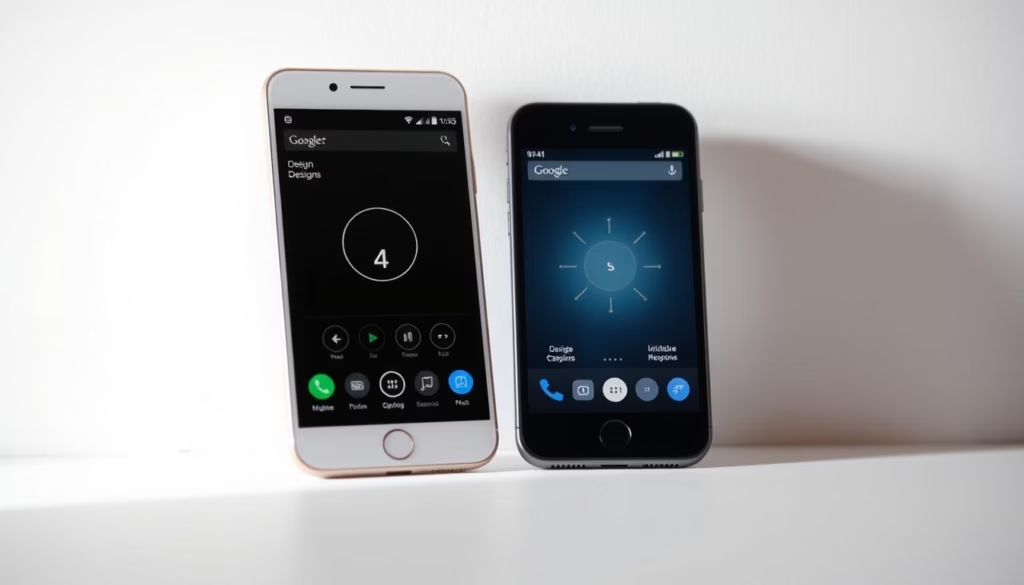Thinking about your next smartphone? You’re probably considering Android vs iPhone options. In 2025, these two leaders are still at the forefront of tech.
This guide will show you which phone is best for you. We’ll dive into the latest features, operating systems, and user experiences—essential in the Android vs iPhone debate.
By the end of this article, you’ll know which smartphone fits your needs and preferences.
Key Takeaways
-
Understand the key differences between Android vs iPhone devices in 2025.
-
Explore the latest features and operating systems of both smartphones.
-
Learn how to choose the best device based on your needs and preferences.
-
Discover the unique user experiences offered by both platforms.
-
Make an informed decision about your next smartphone purchase.
Overview of Android and iPhone Economies
The economies of Android vs iPhone are shaped by many factors, including market share trends and consumer preferences. Knowing these helps figure out which platform is better for you.
Market Share Trends
Android and iOS are always competing, each popular in different regions. Android leads globally, while iOS dominates in the United States.
| Region | Android Market Share | iOS Market Share |
|---|---|---|
| Global | 70% | 28% |
| United States | 45% | 54% |
| Asia | 80% | 18% |
Android is strong in Asia due to its wider reach. iOS, however, holds a strong position in the United States, key for Apple.
Consumer Preferences
What users value plays a big role in the Android vs iPhone landscape. Some prefer Android’s customization and flexibility, while others favor iPhone’s seamless ecosystem.
-
Customization and flexibility
-
Ecosystem integration
-
Security features
Understanding these preferences helps you choose the right operating system.
Emerging Technologies
Innovations like AI and 5G are reshaping both ecosystems. They enhance the user experience and open up new possibilities for development.
User Experience: Interface and Usability
The way a smartphone looks and functions is vital. Android vs iPhone approaches interface and usability differently. Interface refers to visual design; usability means how easy the device is to navigate.
Aesthetic Design
Design matters. iPhones are known for sleek, minimalist aesthetics, offering a polished and consistent user experience. Android phones, made by various manufacturers, come in diverse styles and offer more visual customization.

Customization and Personalization
Customization is important for making your smartphone your own. Android is seen as more customizable than iPhone. It offers more ways to change your home screen, notification shade, and other features.
| Feature | Android | iPhone |
|---|---|---|
| Home Screen Customization | Highly customizable with widgets and launchers | Limited customization options |
| Notification Shade | Customizable with various toggles and layouts | Standardized notification center |
| Launchers and Icon Packs | Supports third-party launchers and icon packs | Limited to default launcher and icons |
Choosing between Android and iPhone depends on what you value more. If you want to customize, Android might be better. If you like a simple, easy-to-use interface, iPhone could be the way to go.
Performance Comparison: Speed and Efficiency
Understanding the performance differences between Android and iPhone is key to choosing the right smartphone.
Hardware and Software Synergy
The connection between hardware and software is vital for top performance. Android devices come in many configurations, fitting different budgets and tastes. iPhones, on the other hand, have hardware and software that work together perfectly, offering a smooth experience.
Android’s wide range of hardware means performance can vary. Some Androids have specs that match or beat iPhones. But, this variety can also lead to uneven performance among Androids.
Battery Life Evaluation
Battery life is crucial for a good smartphone experience. Androids often have bigger batteries, lasting longer than iPhones. Yet, iPhones manage their batteries well, giving a reliable performance despite their smaller sizes.
| Feature | Android | iPhone |
|---|---|---|
| Battery Life | Varied, with options for large batteries | Efficient battery management, generally smaller batteries |
| Performance Speed | Depends on hardware configuration, can be very fast | Consistently fast due to optimized hardware and software |
| App Ecosystem | Google Play Store offers a wide selection of apps | App Store has a wide selection, with a focus on quality and exclusivity |
App Ecosystem and Availability
The app ecosystem is a big factor in comparing Android and iPhone. Both the Google Play Store and App Store have lots of apps. But, they approach app quality and exclusivity differently.
Android’s open system lets developers be more flexible, offering more app choices. But, iPhone’s strict app review process means apps are often of higher quality, improving the user experience.
When choosing, think about what matters most to you. If you want customization and many hardware options, Android might be better. If you prefer a secure, streamlined experience with top-notch apps, iPhone could be the way to go.
Pricing and Value Assessment
Choosing between Android and iPhone devices often comes down to price and value. You must think about the upfront costs and the long-term benefits. Also, consider how easy it is to sell the device later.
Initial Investment
Android devices can cost a lot, from cheap to very expensive. iPhones are pricier, starting at a higher point. Remember to add the cost of accessories and plans to the total price.
Comparing prices helps you see which platform is more affordable.
Long-Term Value
Long-term value is key. iPhones hold their value well, thanks to their durability and updates. Androids offer more customization and hardware choices.
Thinking about both upfront costs and long-term value helps you choose wisely. This way, you pick what’s best for your needs and budget.